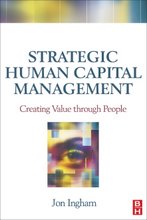 Another interesting article I didn't find time to post on last month was on the shortage of talent, 'Cloned Development Contributes to Crisis of Leadership Supply', published in Talent Management.
Another interesting article I didn't find time to post on last month was on the shortage of talent, 'Cloned Development Contributes to Crisis of Leadership Supply', published in Talent Management.
The article argues that there are plenty of potential leaders available, "and they're actually dying to lead. They just have no desire to lead as they have been led". Organisations just need to be more flexible in developing and retaining them, and engaging them to progress into a managerial career. Part of this is about allowing these people to act as individuals (not as Business Week (The future of work) argues, as some type of generic 'Organisation Man' (or even woman).
I think this reinforces Peter Cappelli's argument that there isn't really any talent shortage(see The Baby Boomers are Retiring! So What? and What Labor Shortage? Debunking a Popular Myth).
Instead, Cappelli believes that there will be an adequate supply of workers. They just won't be the type, age or quality that organisations are looking for.
“Employers could be forgiven for thinking that this situation looked like a labour shortage: Despite flat-out hiring, they could not bring in enough workers to meet their needs."
But treating the problem as if it were a labour shortage leads to a set of bad decisions. The solution involves better planning, better retention of explicit categories of workers and more professional HR execution.
It's a point I also make in an article for Buck's Global View (1st quarter, 2007), 'Retaining Talented Employees':
"The quality of an organisation’s talent is increasingly becoming a critical success factor. The demand for talent is growing as more organisations recognise that they need the right talent to compete. At the same time, many organisations believe that the supply of available talent is actually declining. This is often not necessarily the case, as it may just be that these organisations need to be flexible in where they find their talent, – for example, through the employment of more women and older workers. However, significant cultural change will often be required before organisations can fully access these wider talent pools."
The point in the Talent Management article that builds upon both my own and Cappelli's writing is that the key to engaging these additional employees is to "honour who they want to become, not attempt to mold them into carbon copies of today's leaders".
"Design learning events that let people have real conversations. Have conversations that really allow people to have a voice. We want the next generation to find their voice, but we resent that their voice now is in formation — it's strident, it's abrasive, it's loose, it's not articulate and it's never going to become a polished, powerful voice if we don't let them use it.
They may come across as rebellious and crass, but that's the sign of a leader who will be innovative and courageous in the future. People have to learn how to help them shape that capacity. Incumbent leaders get so impatient. They throw their hands up and go, 'He's useless!' or 'I'm not putting up with this! They're disrespectful — they're talking to me as if I'm one of their friends.'
We misinterpret the behavior. This generation doesn't want a pat on the back or a high-five. They want genuine gratitude. They want to know that it's not just their contribution that matters — it's them as the contributor that also matters, and they want us to understand how what they contributed is a reflection of them as the contributor."
Dealing with people in this way (and I think the points apply largely to employees of any generation) requires a higher degree of authentic leadership and emotional intelligence than exists in many organisations. So how to develop it? One good example of the type of leadership development programme which is required is that being implemented at Sony by a former colleague from Penna, Alexandra Smith at Swan, which is profiled in the latest edition of People Management, Can You Feel It:
"The SLDP, launched in July last year, involves three modules spread over around eight months. The first, entitled “Visionary leadership”, focuses on the individual’s motivation, life values and career path. As well as the “lifeline”, it involves using appreciative inquiry techniques to explore their understanding of “peak” leadership performance so they can understand what great leadership looks and feels like to them.
The second module, “Leading with emotional intelligence”, requires participants to keep a journal for a week to track their emotional processes at work and at home. “It can be very illuminating if they realise they have been angry or frustrated for three-quarters of the week,” Smith points out. Participants explore using the energy of their emotions in ways that are helpful rather than destructive. The third module, “Coaching for potential,” involves coaching each other to learn how to use open questioning techniques.
Each module is preceded by a tele-conference to introduce the themes that will be covered, while between the modules participants work with their own individual coaches to consolidate the learning and integrate it into their daily work. The course ends with a showcase presentation to the president."
Organisations that prefer to follow Dolly the sheep rather than using innovative programmes like this are likely to find they will fall short of talent.
































